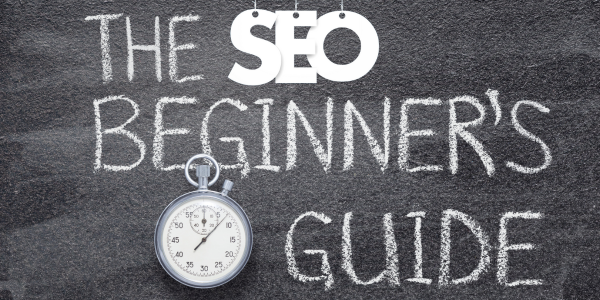SEO For Beginners: Get Your Blog Content Ranking Better
Are you struggling to get your blog noticed? Are you new to SEO and trying to get your blog content ranking better? It’s a common hurdle, given that Google processes over 3.5 billion searches per day! This SEO for beginners tutorial is here to help guide you through the basics of SEO so that your content can rank better and attract more readers.
Ready, set… let’s conquer search engine optimization together with this guide on SEO for beginners!
Key Takeaways
- Choose the right hosting plan for your blog to ensure fast loading speeds and solid uptime guarantees.
- Implement SSL security on your website to protect user information and boost trust and confidence.
- Use a well-coded, clean, responsive, and optimized template for performance to improve user experience.
- Install SEO plugins like Yoast to easily optimize your website for search engines and enhance its overall performance.
Table of contents
- Key Takeaways
- Guide to SEO For Beginners & Keyword Research for Better Google Search Results
- SEO Basics: Steps for Website Experience Optimization
- Steps for Content Experience Optimization (Optimize User Experience)
- 1. Demonstrate expertise, authoritativeness, and trustworthiness (E-A-T)
- 2. Understand audience needs and wants
- 3. Conduct thorough research
- 4. Craft clear and engaging titles
- 5. Format blog posts for readability and search engines
- 6. Optimize for featured snippets
- 7. Add meta titles and descriptions
- 8. Identify and use relevant keywords
- 9. Include relevant images and internal/external links
- Ongoing Search Engine Optimization for Better Keyword Ranking
- SEO For Beginners: Are You Ready for SEO Success & Better SEO Results?
- SEO for Beginners FAQs
Guide to SEO For Beginners & Keyword Research for Better Google Search Results
The first thing to dive into when it comes to SEO for beginners are the fundamentals.
SEO fundamentals are crucial for improving the ranking of your content because it prioritizes quality and utility over quantity, enhances website experience, streamlines content experience, and requires ongoing optimization efforts.
1. Quality and utility over quantity
A high number of articles on your business blog won’t necessarily translate to increased traffic or better rankings. Internet users and search engines, like Google, favor quality over quantity. People who use Google are there to find answers to their problems and aren’t looking for “fluff” content.
High results from search queries mean that Google thinks the results are the best according to their scan. You need to tell Google that your content is better by finding keywords with decent search volume (by using analytics tools like checking the metrics in Google Analytics) and then optimizing your content for all the keywords you’re trying to rank for.
Related Article: 10 Reasons Your Brand Needs an SEO Content Writer
If Google considers your content to be of high quality, you should find yourself in the top 10 results in Google and find your content performing in Google search results pages.
A well-researched, comprehensive post that offers real value to its readers can outperform dozens of mediocre ones. The same holds true for keyword-stuffing an article with innumerable keywords is not as effective as strategically placing a few relevant ones.

Therefore, it’s beneficial to invest time and effort into creating high-quality content that meets your audience’s needs effectively rather than flooding them with copious amounts of average-quality content.
Something else to note is that SEO is a long game and not an instant thing. When it comes to SEO for beginners, many get frustrated when they don’t see immediate results. SEO takes time. Keep pushing forward and you’ll see the results you’re looking for.
2. Website experience
Optimizing your webpage is crucial when it comes to SEO for beginners and their success. A well-structured, user-friendly website engages visitors and can significantly boost your search engine rankings. The first step to achieving this involves choosing the correct hosting plan.
Your chosen server should provide excellent uptime, swift loading speeds, and prompt customer service.
Every business owner must ensure their web pages are secure with SSL certificates. These digital certificates not only encrypt data but also positively impact Google search results.
Another key aspect of enhancing a website’s experience is selecting an adeptly coded template, as it allows better search engine bots to crawl through your site easily.

Another essential element towards improving website experience lies in optimizing the performance using various plugins, which ease navigation for users and make maintaining the site more manageable for owners, too.
Maintaining proper permalink structure not only improves user understanding but also helps Google understand your content faster, increasing visibility on Search Engine Results Pages (SERPs).
Installing SEO plugins like Yoast can guide you while producing optimized blog content that ranks higher on SERP by adjusting necessary keywords effortlessly.
Lastly, implementing tools like Google Analytics and using Google Search Console allows you to track progress effectively while optimizing images and keeps webpage load time minimal, thereby preventing bounce rates due to slow loading times.
All these factors collectively help create an efficient and pleasant website experience, paving the way for better SEO rankings.
3. Content experience
Creating a compelling content experience is the heart of successful SEO efforts. It requires more than relevant keywords and meta descriptions — it demands substance, insight, and engagement.
Business owners must strive to offer unique information enveloped in an easy-to-read format that demonstrates their expertise, authoritativeness, and trustworthiness (E-A-T). Interweaving relevant images boosts the visual appeal of your blog posts, whereas internal/external links anchor readers to your site longer.

The focus should be on understanding what the audience needs and crafting content using thorough research methods that cater specifically to those requirements. High-quality blog content goes far beyond achieving higher Google rankings, it fosters customer loyalty by consistently delivering value to your readership.
4. Ongoing optimization
Ongoing optimization is crucial to maintain and improve your blog’s search engine rankings. It involves regularly updating and refining your content to ensure it remains relevant and valuable to your audience.
Related Article: The Indispensable Role of an SEO Specialist for Your Business
By consistently monitoring keyword trends, analyzing user behavior, and keeping up with the latest SEO best practices, you can continue to optimize your blog for better visibility in search engine results.
Ongoing optimization also includes updating high-traffic posts, ensuring that content stays current and meets the evolving needs of your target audience. Additionally, optimizing for voice search and refreshing publication dates for freshness are important aspects of ongoing optimization strategies.
SEO Basics: Steps for Website Experience Optimization
To optimize the website experience, choose the right hosting plan, ensure SSL security, use a well-coded template, and install SEO plugins like Yoast. Implement Google Analytics and Search Console for better tracking and performance analysis.
Optimize images to improve loading speed and enhance user experience. Take these steps to improve your blog’s ranking on Google and other search engines with your SEO content!
1. Choose the right hosting plan
Choosing the right hosting plan is crucial for optimizing your website’s performance and improving its SEO. A reliable and fast web host ensures that your site loads quickly, which is a critical factor in ranking higher on search engines like Google.
Personally, I use HostGator, and I’ve never had any issues with them. In fact, when something isn’t right on my website, they are always there to help in the online chat.
Look for a hosting provider that offers solid uptime guarantees and high-speed servers to ensure that your website remains accessible to visitors at all times. Additionally, consider opting for a hosting plan with advanced security features to protect against cyber threats.
By choosing the right hosting plan, you lay a strong foundation for better SEO results and an improved user experience on your website.
2. Ensure SSL security
To improve your blog’s search engine rankings, it is crucial to ensure SSL security. Implementing SSL (Secure Sockets Layer) helps protect the sensitive information of your website visitors, such as passwords and credit card details.
It creates a secure connection between your website server and the user’s browser, encrypting data and preventing unauthorized access. Having SSL security also boosts user trust and confidence in your site, leading to better SEO performance.
So, make sure that all pages on your blog are encrypted with SSL certificates to provide a safe browsing experience for your audience.
If you choose to use HostGator, they provide a free SSL for your website.
3. Use a well-coded template
Choosing a well-coded template is crucial for optimizing your blog’s search engine rankings. A well-coded template ensures that your website runs smoothly and efficiently, making it easier for search engines to crawl and index your content.
By using a well-coded template, you can improve the overall user experience and make it easier for visitors to navigate through your blog. This will not only help with SEO but also enhance the credibility of your website.
So, when selecting a template, make sure it is clean, responsive, and optimized for performance. With a well-coded template in place, you’ll be one step closer to achieving higher rankings in search engine results pages (SERPs).
4. Optimize website performance with plugins
Optimizing your website’s performance is crucial for improving its search engine rankings. One effective way to do this is by utilizing an SEO plugin. Plugins are small software additions (SEO tools) that can enhance the functionality and speed of your website. While Yoast is a free SEO tool, they also have a paid version with added benefits. I’ve been using Yoast for years, and it’s one of the most useful SEO tools I’ve found.
By installing and configuring SEO-focused plugins like Yoast, you can easily optimize your website for search engines, improve page load times, and enhance user experience. These plugins provide valuable features such as XML sitemaps, meta tag optimization, and keyword analysis tools that help boost your SEO efforts.
With the right plugins in place, you can ensure that your website performs at its best and increases its chances of ranking higher in search engine results pages.
5. Set permalink structure
To optimize your blog’s search engine rankings, it’s important to set a proper permalink structure. Permalinks are the permanent URLs assigned to your blog posts. By default, most content management systems generate permalinks that consist of random numbers and characters.
However, having descriptive and keyword-rich permalinks can greatly improve your SEO performance.

Setting a clear and concise permalink structure helps search engines understand what your blog post is about. It also makes it easier for users to remember and share your post’s URL.
When crafting your permalinks, try to include relevant keywords that accurately describe the content of the post. This will make it more likely for search engines to display your blog in relevant search results.
Remember, when setting up permalinks, choose a structure that is easy to read and consistent across all your blog posts. Avoid using unnecessary symbols or special characters in the URL, as they may confuse both users and search engines alike.
6. Ensure website security
To optimize your blog’s performance and enhance its SEO, it is crucial to ensure website security. A secure website not only protects your valuable data but also builds trust with visitors.
Implementing SSL security measures, such as obtaining an SSL certificate, encrypts the data exchanged between your website and users, safeguarding sensitive information. Regularly updating software and plugins, using strong passwords, and conducting security audits are essential steps in protecting against hacking attempts and maintaining a secure online presence.
Don’t overlook the importance of website security when striving for optimal SEO results.
7. Install SEO plugins (e.g., Yoast)
To optimize your blog’s SEO and improve its rankings on search engines like Google, it is crucial to install SEO plugins such as Yoast (a free tool). These plugins provide valuable tools and features that can help you easily optimize your blog content for better visibility in search engine results. Even if you don’t understand the basics of SEO, Yoast can give you an advantage and provide SEO steps to help you better optimize your content to rank well in search.
With Yoast, for example, you can analyze the readability of your posts, add meta titles and descriptions, identify relevant keywords, and even preview how your content will appear in search results. Being able to measure SEO on your content and make improvements can show Google that you’re on point with your content and help you rank better via Google search results pages.
By utilizing these SEO plugins, you can take advantage of their built-in optimization features to enhance the overall performance of your blog and drive more organic traffic to your website.
8. Implement Google Analytics and Search Console
Google offers some free tools that you should take advantage of. Be sure that you connect your site to Google before trying to access these tools. Implementing Google Analytics and Search Console is crucial for tracking and analyzing the performance of your blog content. With Google Analytics, you can gain valuable insights into your SEO metrics, website traffic, user behavior, and audience demographics.
This information helps you identify which blog posts are performing well and which ones may need improvement. Additionally, Search Console allows you to monitor how your blog appears in Google search results and identify any issues that may be affecting its visibility.
By leveraging these powerful tools, you can make data-driven decisions to optimize your content strategy and improve your overall SEO performance.
9. Optimize images
Optimizing images is a crucial step in improving the SEO performance of your blog content in the eyes of Google. By optimizing your images, you can enhance the user experience and help search engines understand what your content is about.
When it comes to image optimization, there are a few key factors to keep in mind.
Firstly, make sure that your images are appropriately sized for web display. Large file sizes can slow down page load times, negatively impacting both user experience and search engine rankings.
Additionally, consider using descriptive filenames and alt tags for your images. This helps search engines identify the relevance of the image to your content.
Remember that visually appealing and relevant images can also encourage users to stay on your page longer and engage with your content. So, take the time to select high-quality visuals that complement your blog posts.
Steps for Content Experience Optimization (Optimize User Experience)
Craft clear and engaging titles to attract readers and improve search engine visibility. If you think about how search engines work, they put what they believe to be the best content at the highest positions in the ranking in Google.
1. Demonstrate expertise, authoritativeness, and trustworthiness (E-A-T)
To improve your blog’s SEO performance, it is crucial to demonstrate expertise, authoritativeness, and trustworthiness (E-A-T). This means showcasing your knowledge and credibility in your content. Something you need to understand as it relates to SEO for beginners is that you will probably not have enough E-A-T right from the rip. You’ll need to build content that ranks in order to establish E-A-T in Google’s eyes.
Conduct thorough research on your topics to provide accurate information. Craft clear and engaging titles that accurately reflect what readers can expect from your blog post. Format your posts for both readability and search engines by using headings, subheadings, bullet points, and short paragraphs.
Optimize for featured snippets by providing concise answers to commonly asked questions. Remember to include meta titles and descriptions that accurately represent the content of each post.
2. Understand audience needs and wants
To achieve SEO success, it is crucial to understand the needs and wants of your audience. By knowing what they are searching for and what information they are seeking, you can tailor your content to meet their expectations.
Conduct thorough research and use keyword targeting to identify topics that resonate with your target audience. Craft clear, engaging titles that capture their attention, and format blog posts for readability and search engines.
By addressing the specific needs of your audience in a relevant and informative way, you can improve your chances of ranking higher in Google search results.
3. Conduct thorough research
To improve your blog’s ranking in search engine results, it is crucial to conduct thorough research. This involves understanding what topics and keywords are relevant to your audience and aligning your content with their needs and wants.
By doing comprehensive keyword research, you can identify the words and phrases that people are searching for, allowing you to optimize your blog posts accordingly. Additionally, staying up-to-date with industry trends and keeping an eye on your competitors’ strategies can provide valuable insights for creating high-quality, engaging content that stands out from the competition.
Remember, a well-researched blog post has a higher chance of attracting organic traffic and ranking better in Google search results.
4. Craft clear and engaging titles
Crafting clear and engaging titles is crucial to optimizing your blog content for search engine rankings. The title of your blog post should accurately reflect the topic and entice readers to click through and read more.
Using relevant keywords in your title can improve your chances of ranking higher on search engine results pages. Additionally, incorporating attention-grabbing language or intriguing questions can help capture the interest of potential readers.
Remember, a well-crafted title not only helps Google understand what your content is about but also encourages users to choose your blog over others in the search results. So, take the time to brainstorm creative and compelling titles that will attract more organic traffic to your website.
5. Format blog posts for readability and search engines
Formatting your blog posts is essential for both readability and search engine optimization. When it comes to readability, make sure to use short paragraphs and sentences that are easy to follow.
Additionally, include headings, subheadings, and bullet points to break up the text and make it more scannable. Remember to use a clear font and an appropriate font size.
Related Article: 7 Reasons Why Your Business Needs a Blog
But formatting isn’t just about making your content easier for humans to read, it also helps search engines understand your content better. A critical aspect of formatting for SEO is using proper HTML tags for heading hierarchy (H1, H2, etc.).
This helps search engines determine the structure of your content.
Another crucial factor in formatting for search engines is using relevant keywords throughout your blog post. Include them in the title tag, meta description, headings, and within the body of the text naturally—avoid stuffing keywords unnaturally or excessively.
6. Optimize for featured snippets
Optimizing for featured snippets is a crucial aspect of blog SEO. Featured snippets are selected search results that appear at the top of organic search results, providing users with quick answers to their queries.

By optimizing your content to be eligible for featured snippets, you have a higher chance of attracting more visibility and driving traffic to your blog. To optimize for featured snippets, focus on providing clear, concise, and informative answers to commonly asked questions within your content.
Structure your content in a way that addresses these questions directly and use headers or bullet points to highlight the key information. Additionally, incorporating relevant keywords into your headings and subheadings can also increase the chances of being featured as a snippet in Google’s search results pages.
7. Add meta titles and descriptions
When optimizing your blog content for search engines, paying attention to meta titles and descriptions is crucial. These elements provide a concise summary of what your blog post is about and appear in the search engine results pages (SERPs).
By strategically crafting compelling meta titles and descriptions, you can increase click-through rates and improve your chances of ranking higher in organic search results.
Meta titles should accurately reflect the main topic of your blog post while incorporating relevant keywords. Be concise yet descriptive, as users will see this when scanning through the SERPs.
Aim for around 50-60 characters to ensure your title isn’t cut off.
Similarly, meta descriptions should provide an enticing preview of your blog post. They typically consist of 150-160 characters and should include important keywords naturally. Use this opportunity to highlight the value or unique aspects of your content, encouraging users to click on your link.
8. Identify and use relevant keywords
To improve your blog’s search engine rankings, it is crucial to identify and use relevant keywords. These are the terms that people enter into search engines when they’re looking for information.
By incorporating these keywords naturally throughout your blog content, you can increase its visibility to search engines and attract more organic traffic. Keyword research tools can help you discover high-ranking keywords that are relevant to your blog niche.
Once you have identified these keywords, strategically place them in your titles, headings, subheadings, and within the body of your blog posts. Remember to prioritize user experience by ensuring that the keyword usage feels natural and doesn’t disrupt the flow of your content.
9. Include relevant images and internal/external links
Including relevant images and internal/external links in your blog posts is crucial for improving your search engine rankings. Images enhance the visual appeal of your content, help to break up text, and make it more engaging for readers.
Make sure to use high-quality, relevant images that are properly optimized with descriptive file names and alt tags.
In addition, incorporating internal and external links can significantly boost your SEO efforts. Internal links help Google understand the structure of your website and how different pages are related to each other.
They also improve user experience by guiding readers to other valuable content on your site.
External links, on the other hand, demonstrate credibility and authority to search engines by linking out to reputable sources. This helps establish trustworthiness in your content and improves its overall quality.
Ongoing Search Engine Optimization for Better Keyword Ranking
Another factor as it relates to SEO for beginners is to continuously update and maintain high-traffic blog posts, keeping the content current and relevant to improve SEO performance and increase your chances of ranking higher in Google search results.
1. Update and maintain high-traffic posts
To improve your blog’s search engine rankings, updating and maintaining high-traffic posts is crucial. Regularly reviewing and refreshing these posts helps keep them relevant and appealing to both readers and search engines.
By updating the content with new information, statistics, or examples, you can provide value to your audience while also signaling to search engines that your post is up-to-date. Additionally, optimizing high-traffic posts with relevant keywords and meta tags can boost their visibility in search results.
Remember, consistently updating these popular pieces of content will contribute to higher organic traffic and improved SEO performance overall, which is an incredibly important part of SEO for beginners.
2. Keep content current and relevant
One major oversight when it comes to SEO for beginners is thinking that after you publish content, you’re done. Maintaining a strong online presence is crucial to keep your content current and relevant. This means regularly updating your blog posts with the latest information and addressing topics that are of interest to your target audience.
By staying up-to-date, you can provide valuable and timely content that keeps readers coming back for more. Additionally, search engines favor fresh and relevant content when ranking websites, so regularly updating your blog can help improve your SEO performance.
Keep in mind that keeping your content current also involves monitoring industry trends and adapting your strategies accordingly. With a focus on providing valuable and timely information, you can ensure that your blog stays at the top of search engine results pages and attracts more organic traffic.
3. Optimize for voice search
To improve your blog’s search engine rankings, it’s important to optimize for voice search. Voice search is becoming increasingly popular, with more people using smart speakers and virtual assistants to find information.
To optimize for voice search, focus on long-tail keywords and conversational phrases that users are likely to use when speaking their queries. Make sure your content answers common questions concisely and clearly.
Related Article: Get in Front of Your Customers with New Marketing Techniques
Aim for featured snippets, as they are often the responses read out by virtual assistants in response to voice searches. By optimizing for voice search, you can increase your chances of ranking higher in organic search results and attract more traffic to your blog.
4. Edit publication dates for freshness
Updating the publication dates of your blog posts is an important step in maintaining freshness and relevancy. By editing the publication dates, you signal to search engines that your content is up-to-date and actively maintained.

This can improve your chances of ranking higher in search results as search engines prioritize fresh content. It also helps users trust that they are accessing current information when they click on your blog post.
Regularly updating publication dates shows both search engines and users that you are actively investing in the quality and relevance of your content.
SEO For Beginners: Are You Ready for SEO Success & Better SEO Results?
Improve your blog’s search engine rankings with these SEO strategies. Optimize your website and content to provide a better user experience, target relevant keywords, and keep your content fresh.
Stay on top of SEO techniques to ensure long-term success for your blog. Hopefully this SEO for beginners guide was helpful. If so, please consider sharing it with others or linking back to this page from your website. We all start somewhere, and SEO for beginners can seem like an insurmountable hill to get over. But by practicing the things mentioned in this guide, you should be well ahead of your competitors.
All that being said, please let us know if you have any questions or if we can help you with your SEO content or copywriting needs. With over 20 years of experience writing for brands, we are confident that we can fit your needs and simplify your content and copywriting process.
If you’re in the health, fitness, nutrition, or supplement industry, click here to contact us, or feel free to check out our content and copywriting service page.
Not in that industry? No worries! If you’re a brand outside of that niche, click here to contact our other writing service brand, Writing Rebels. We’d love to work with you!
SEO for Beginners FAQs
SEO for beginners is a basic guide to understanding and learning the fundamentals of Search Engine Optimization (SEO) to improve content ranking on Google.
Learning and implementing SEO basics, like technical and on-page SEO, aids in getting started with SEO, resulting in your blog content ranking higher.
You can gauge your SEO knowledge by tracking aspects of SEO, such as the rank of your blog content on Google, using various online tools available.
Yes, applying proven SEO tactics from a beginner’s guide to SEO, like appropriate keyword usage or link building, often results more effectively in better rankings within search engine results.
Understanding basic SEO techniques equips beginners with essential SEO skills that contribute significantly to achieving optimal content ratings.


*Disclosure: This article may contain affiliate links or ads, which means we earn a small commission at no extra cost to you if you make a purchase through these links. These commissions help support the operation and maintenance of our website, allowing us to continue producing free valuable content. Your support is genuinely appreciated, whether you choose to use our links or not. Thank you for being a part of our community and enjoying our content.
PLEASE CONSIDER SHARING THIS ON YOUR SOCIAL MEDIA TO HELP OTHERS LEARN MORE ABOUT THIS TOPIC.





